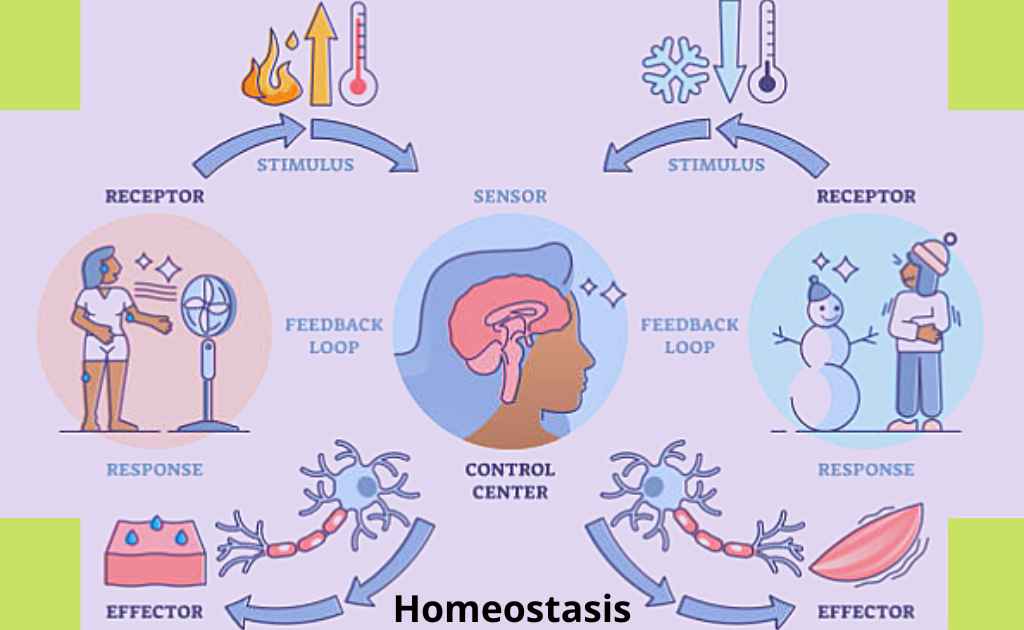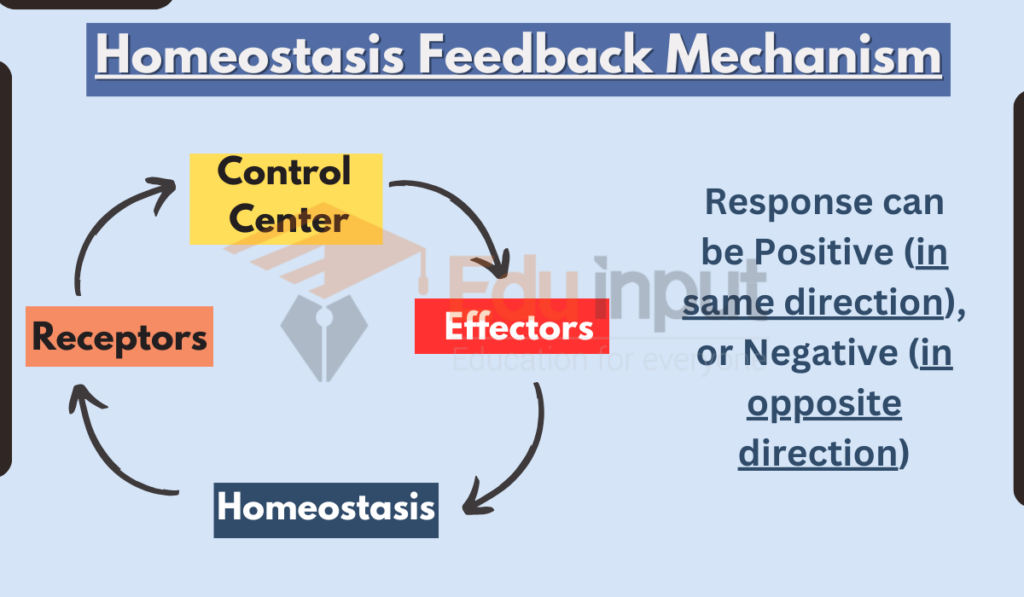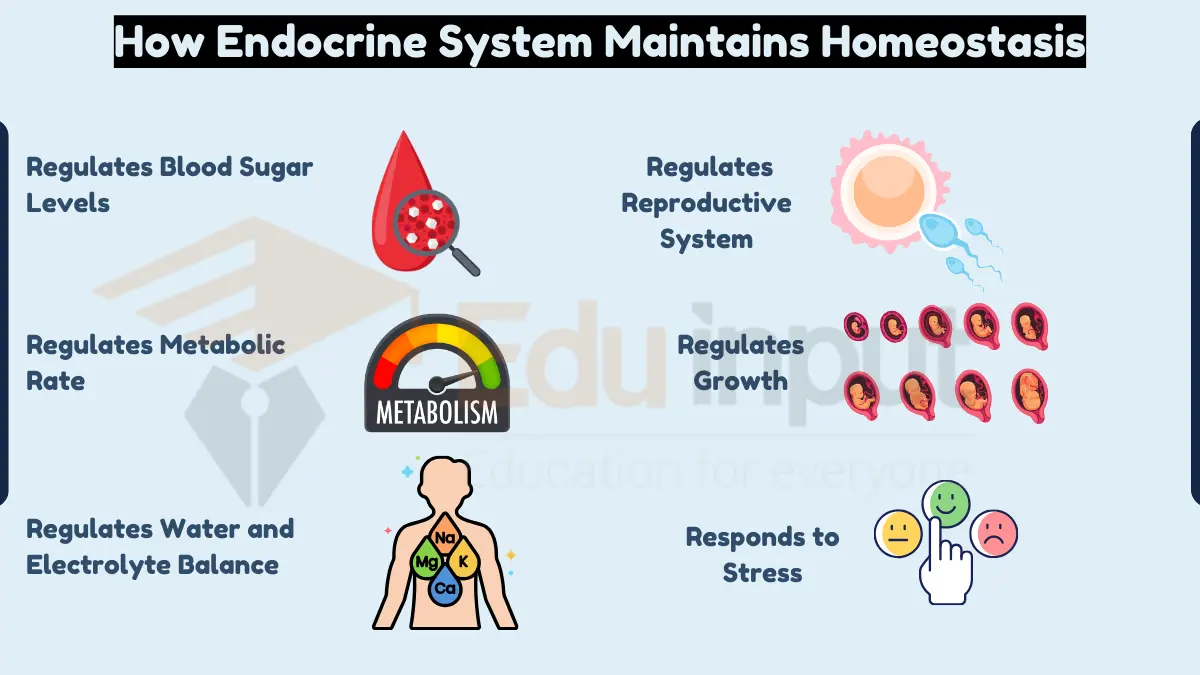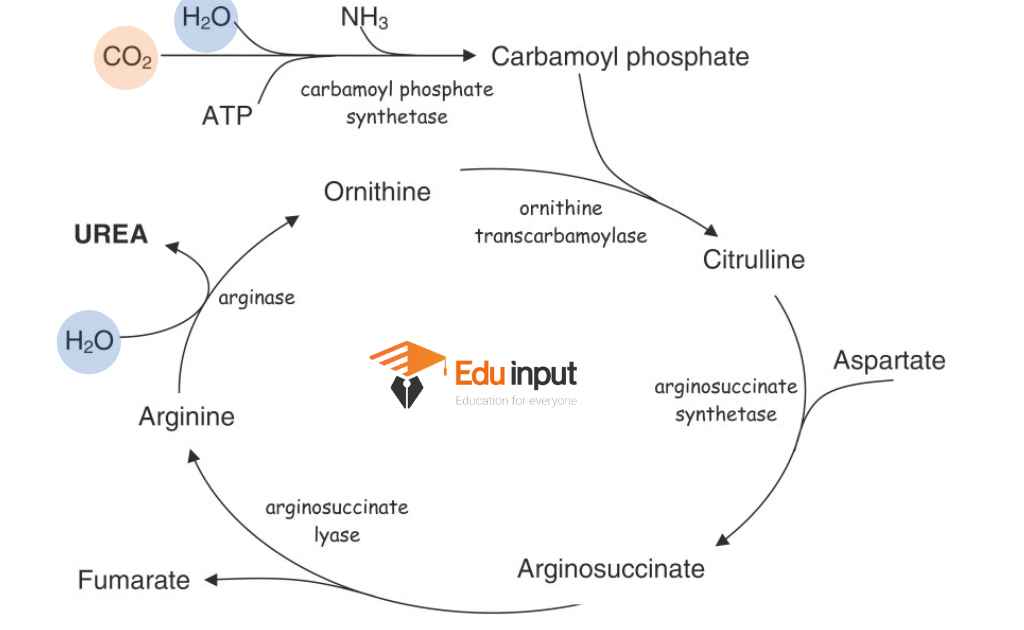Homeostasis-Definition, Objectives, Examples, Importance, and Levels of Homeostasis
What is Homeostasis?
In Biology, protection of the internal environment from the harms of the fluctuation in the external environment is called homeostasis.

Homeostasis In Anatomy
In anatomy, homeostasis is important because it ensures that the body’s cells and tissues have the conditions they need to function properly.
For example, homeostasis maintains a constant body temperature, blood sugar level, and water balance. These are all essential for cell survival and function.
Homeostasis In Physiology
In physiology, homeostasis is important because it allows the body to function properly. Without homeostasis, the body would not be able to maintain a constant temperature, blood pressure, blood sugar level, and other important bodily functions.
Objectives Of Homeostasis
The objectives of homeostasis are to:
- Maintain a stable internal environment within the body, despite changes in the external environment.
- Ensure that the body’s cells have the conditions they need to function properly.
- Prevent the body from becoming too damaged by changes in the environment.
- Allow the body to adapt to changes in the environment over time.
Homeostasis at Organism Level
The organismic level of homeostasis is the maintenance of a stable internal environment within the body of organism, despite changes in the external environment.
This level of homeostasis is achieved through the coordinated activity of many different organ systems, including the nervous system, endocrine system, respiratory system, cardiovascular system, digestive system, and urinary system.
The three main components of the internal environment are water, solutes, and temperature. These components are controlled by three processes:
1. Osmoregulation
Osmoregulation is the maintenance of water and salt balance in the body. This is done by balancing the intake and output of water and solutes. The kidneys play a major role in osmoregulation, as they filter water and solutes from the blood and excrete them in urine.
2. Excretion
Excretion is the elimination of waste products from the body. This includes nitrogenous wastes, such as urea and creatinine, as well as other waste products, such as salt and water. The kidneys are also responsible for excretion.
3. Thermoregulation
Thermoregulation is the maintenance of internal body temperature within a tolerable range. This is done by balancing the heat production and heat loss of the body. The hypothalamus is involved in thermoregulation.
Homeostasis at Cellular Level
The cellular level of homeostasis is the maintenance of a stable internal environment within the cells, despite changes in the extracellular environment.
This level of homeostasis is achieved through the coordinated activity of many different cellular processes, such as:
- Osmosis-movement of water across a semipermeable membrane.
- Diffusion-movement of molecules from an area of high concentration to an area of low concentration.
- Active transport-movement of molecules against a concentration gradient, requiring energy.
- Exocytosis-The release of molecules from the cell.
- Endocytosis-The uptake of molecules into the cell.
Homeostasis Feedback Mechanism
Feedback mechanism is a process in which a system responds to changes in its environment by adjusting its output. In the context of homeostasis, feedback mechanisms are used to maintain a stable internal environment.

Positive Feedback in Homeostasis
Positive feedback is a type of feedback mechanism in which the output of a system increases the input to that system. This can lead to a runaway effect, in which the output of the system continues to increase until it reaches a limit.
Positive feedback is often used in processes that need to be amplified, such as childbirth.
Examples of Positive Feedback In Homeostasis
Here are few examples of Examples of Positive Feedback In Homeostasis:
Blood clotting
When a blood vessel is damaged, platelets release chemicals that trigger the clotting cascade. The clotting cascade forms a clot, which helps to stop the bleeding.
The formation of the clot is an example of positive feedback because it amplifies the initial change in the system (the damage to the blood vessel).
Muscle contraction
When a muscle contracts, it releases calcium ions. These calcium ions bind to receptors on the muscle fibers, which causes the fibers to contract even more.
This is an example of positive feedback because it amplifies the initial change in the system (the contraction of the muscle).
Negative Feedback in Homeostasis
Negative feedback is a type of feedback mechanism in which the output of a system decreases the input to that system.
This helps to keep the system in equilibrium. Negative feedback is the most common type of feedback mechanism in homeostasis.
Examples Of Negative Feedback In Homeostasis
Here are few examples of Examples of Negative Feedback in Homeostasis:
Temperature Regulation
When the body’s temperature rises, the hypothalamus triggers mechanisms to cool the body down. These mechanisms include sweating and vasodilation (the widening of blood vessels).
The sweating and vasodilation help to lower the body’s temperature, which brings it back to its set point. This is an example of negative feedback because the body is trying to return the temperature to its set point.
Blood sugar regulation
When blood sugar levels rise, the pancreas releases insulin. Insulin helps to move glucose into cells, which lowers blood sugar levels.
The release of insulin helps to bring blood sugar levels back to their set point. This is an example of negative feedback.
Importance of Homeostasis
The purpose of homeostasis is to maintain a stable internal environment within the body, despite changes in the external environment.
This is essential for survival, as even small changes in the body’s environment can have a significant impact on its function. Homeostatic Imbalance can cause different diseases in humans.
Here are some of the important purposes of homeostasis:
- Homeostasis is important in Maintaining a constant body temperature. Homeostasis helps to regulate body temperature by sweating when it gets too hot and shivering when it gets too cold.
- Homeostasis is also important in Maintaining a constant blood sugar level. Homeostasis helps to regulate blood sugar levels by releasing hormones such as insulin and glucagon.
- Homeostasis helps in Maintaining a constant blood pH. Homeostasis helps to regulate blood pH by the kidneys and lungs.
- Homeostasis is involved in maintaining constant water balance. Homeostasis helps to regulate water balance by the kidneys and sweat glands.
- Homeostasis also helps in Maintaining a constant salt balance. Homeostasis helps to regulate salt balance by the kidneys and sweat glands.
Examples of Homeostasis
Here are some examples of homeostasis:
- Temperature regulation
- Blood sugar regulation
- Water balance
- Electrolyte balance
- pH balance
- Blood pressure regulation
- Respiration
- Immunity
- Digestion
- Metabolism
Frequently Asked Question – FAQs
What are examples of homeostasis?
Maintenance of Temperature in the animal body
Maintenance of Blood Glucose Level
Water and salt balance in animal body
Why is homeostasis important?
Homeostasis is important to maintain the internal environment despite the changes that are happening in the internal and external environment. It helps to maintain optimal conditions for enzyme action.
How is homeostasis maintained?
Homeostasis is maintained through a series of control mechanisms being controlled at cellular, tissue, and organ level.
What will happen if homeostasis is not maintained properly?
Homeostasis helps to maintain body temperature, water, and salt balance and prevents the accumulation of waste materials. If it is not maintained properly, it can cause an increase in body temperature which may disrupt enzyme functioning. Similarly, an imbalance of salt and water can lead to fatal diseases.
why is sweating an example of homeostasis?
Sweating is an example of homeostasis because it helps the body maintain a stable internal temperature. When our body temperature rises, sweating helps to cool us down by evaporating from the skin. This process absorbs heat from the body, which helps to lower the temperature.

 written by
written by 




Leave a Reply